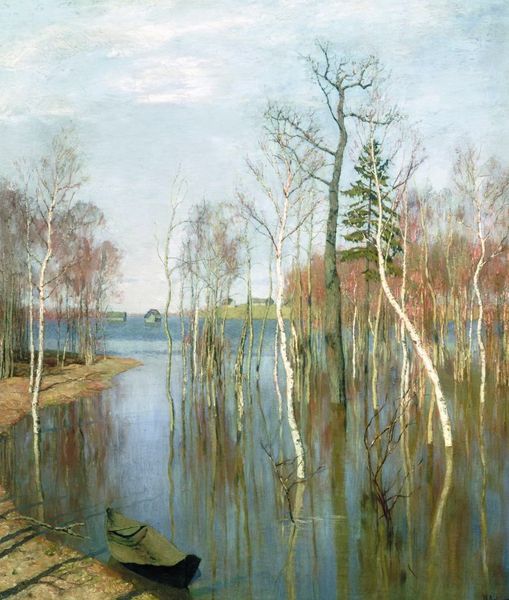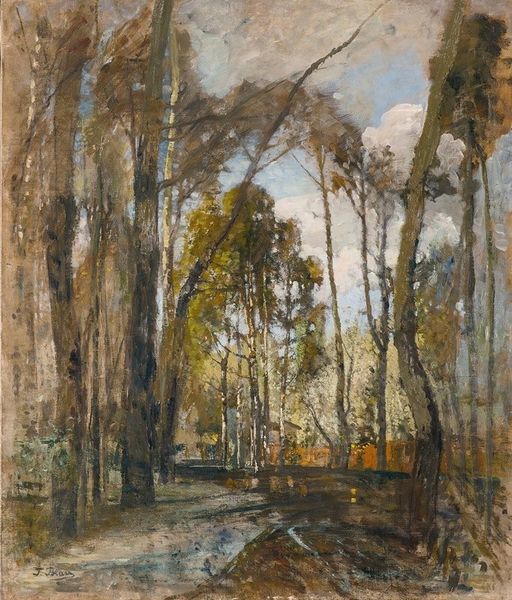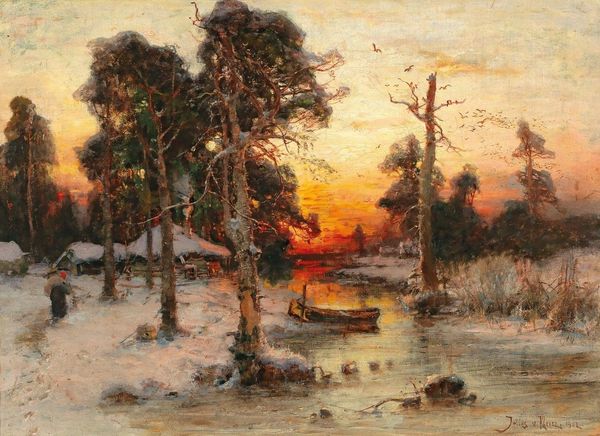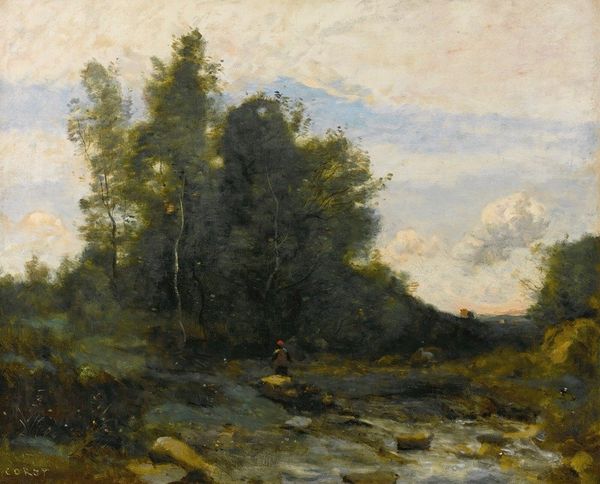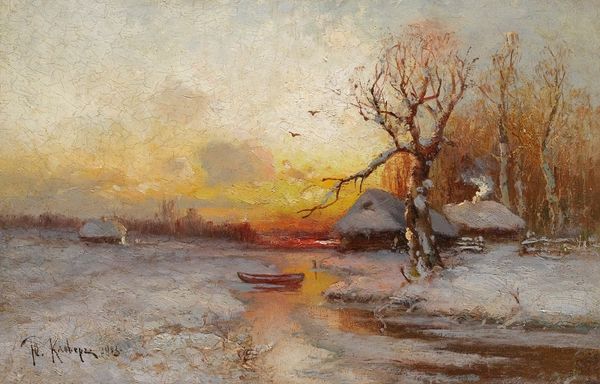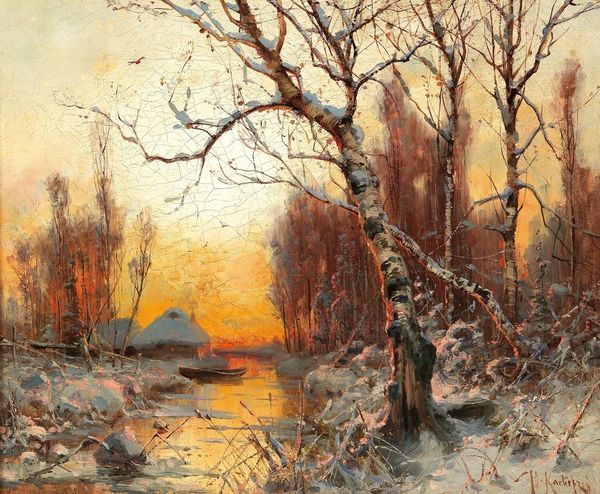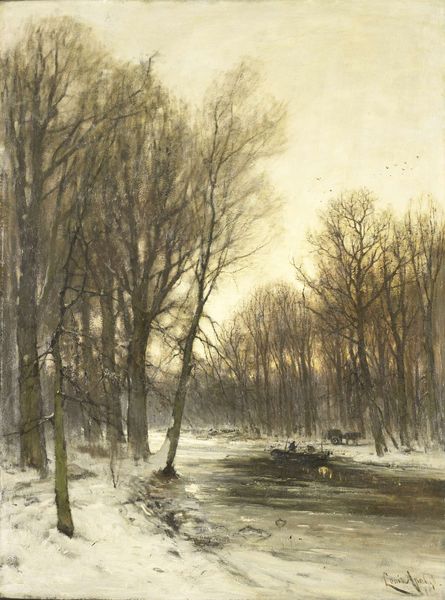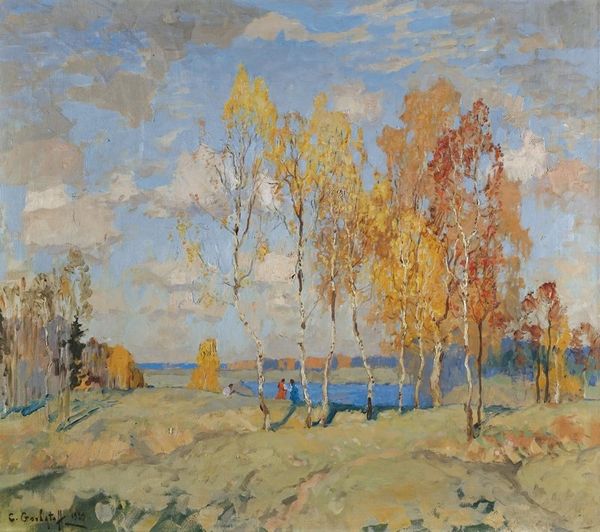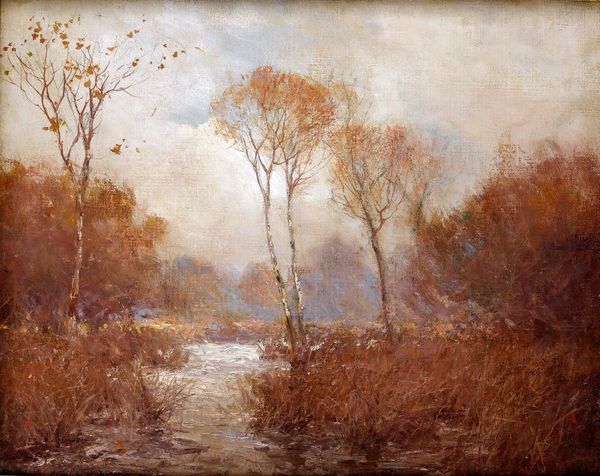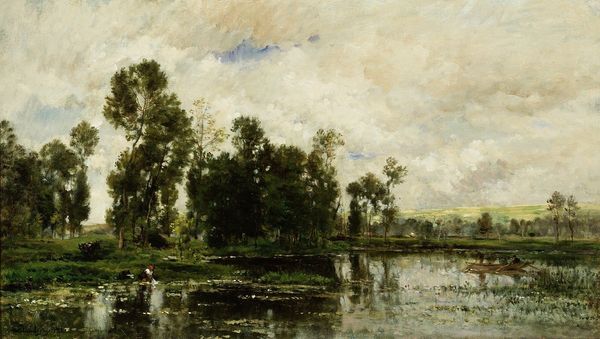
Copyright: Public Domain: Artvee
Curator: Immediately, I’m struck by the feeling of transition, that moment between winter's grip and the gentle promise of spring. There’s a real sense of quiet anticipation held in the arrangement. Editor: And transition is apt! This is "An early spring landscape with a beech tree in the foreground" painted in 1906 by Julius Sergius Klever. It is rendered with oil on canvas, very much in the plein-air style, evoking both realism and romanticism, while hinting at emerging impressionistic landscapes. Curator: You can certainly see the pull between the Realist tradition and something new. The detail in the foreground, the way the light plays on the melting snow is almost photographic, while the background is far more evocative, relying on color and broad brushstrokes to define the space. Editor: The prominent beech tree certainly anchors the scene, doesn't it? Note the artist’s specific placement. Klever's focus brings a level of attention to it. Given the cultural context, trees, especially those in a landscape setting, functioned as strong national symbols. Curator: The choice of a beech is significant too. Beeches, with their smooth bark, were often seen as feminine symbols in art and literature, connected to notions of purity and potential growth. Does this reinforce the painting's theme? Does it express anticipation for the rebirth of the landscape after a dormant season? Editor: Possibly! It certainly reflects broader socio-political desires for growth and renewal across society, especially given Russia's historical landscape. Klever often returned to the motif of winter landscapes. Curator: I think that he does something really remarkable with the muted palette as well. It avoids being bleak, and manages to remain very hopeful, as if he truly captured nature at this precise temporal moment, just before bursting back into full color. Editor: It's almost as if Klever uses the landscape to symbolize our own internal transition. This work provides much to consider beyond just its aesthetic beauty.
Comments
No comments
Be the first to comment and join the conversation on the ultimate creative platform.
